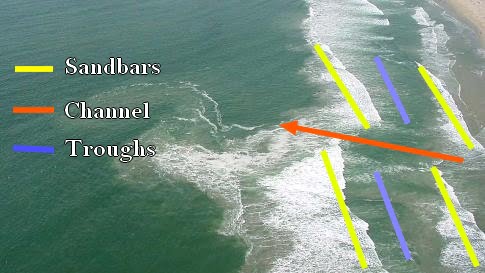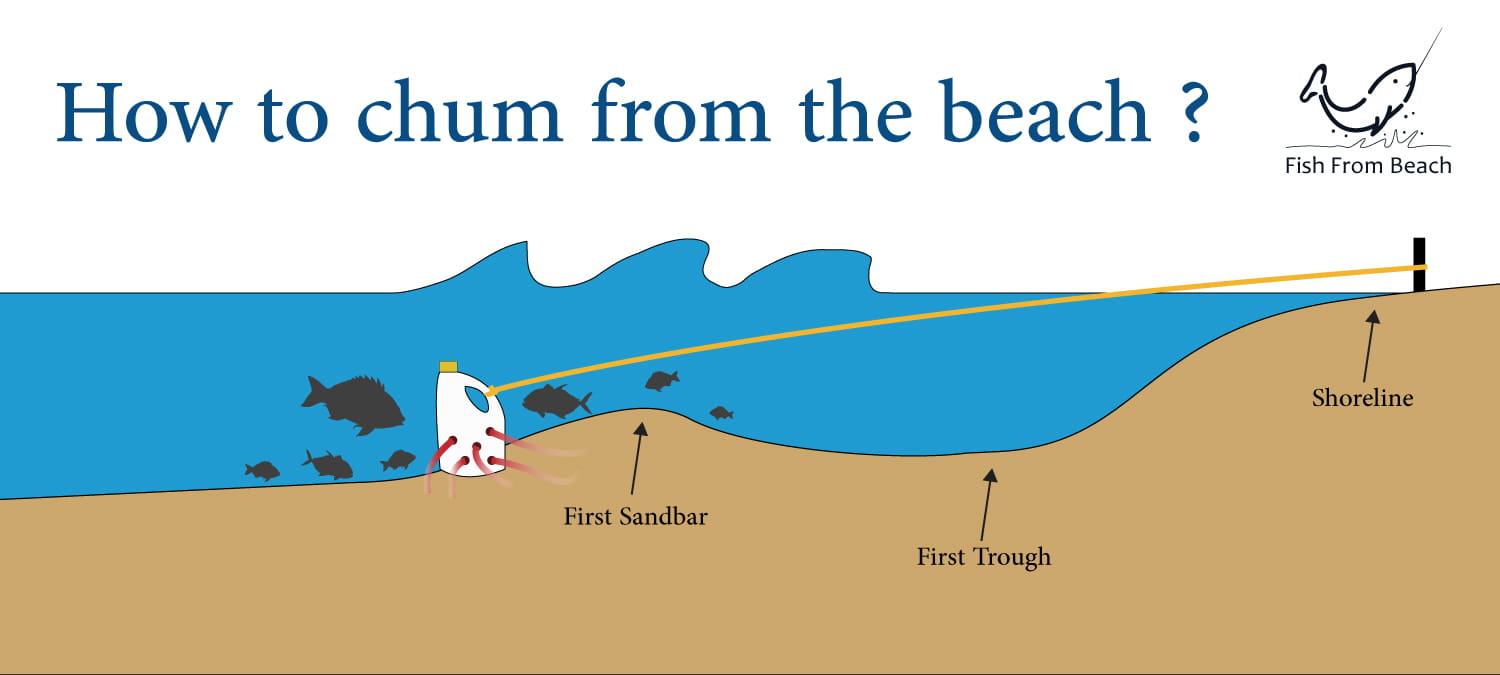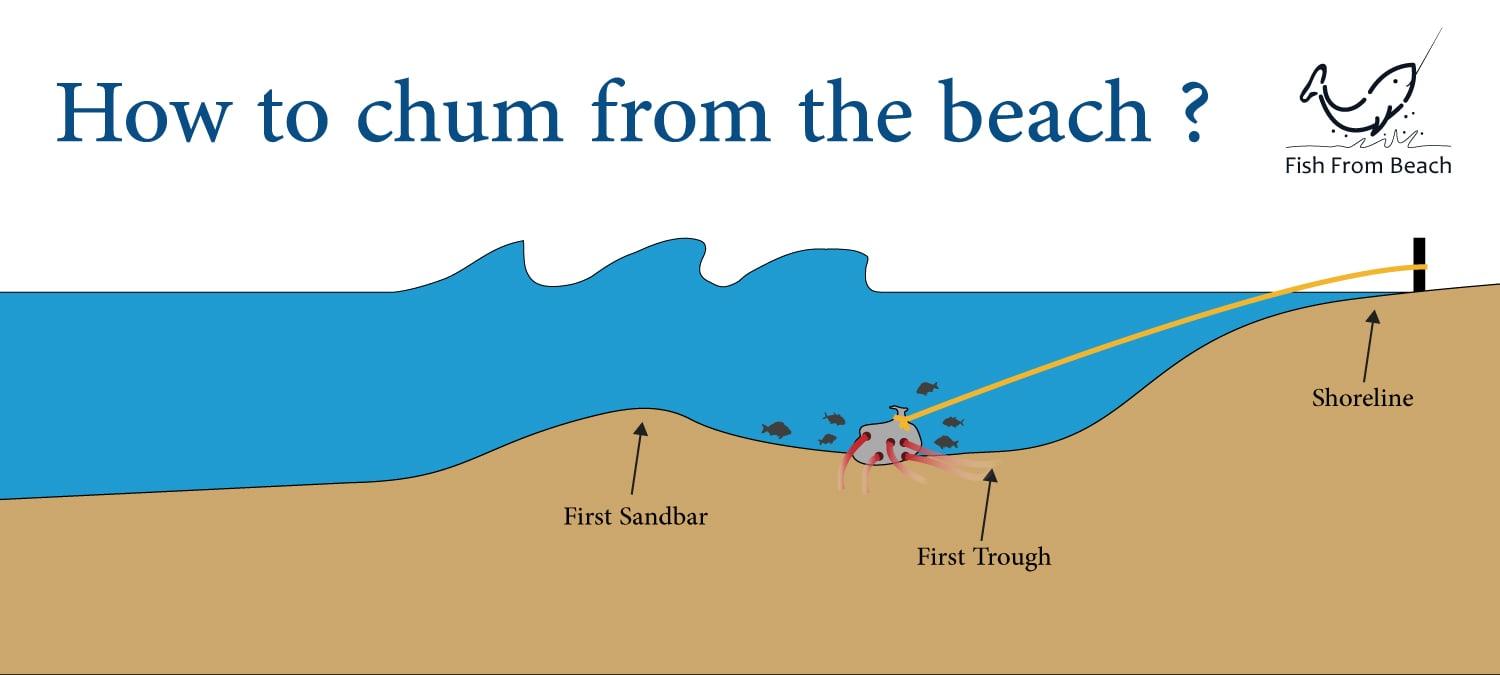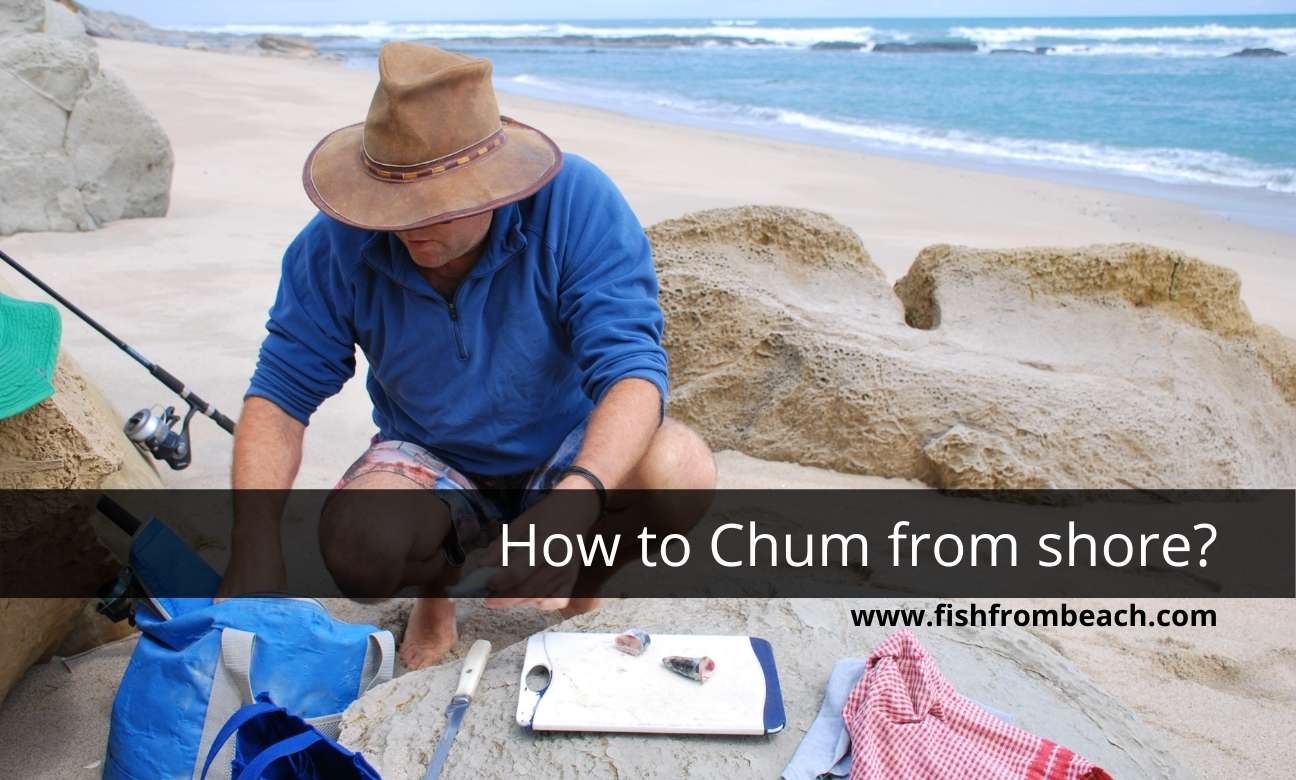Chumming from the beach is not a very common practice.
I have seen so many anglers chumming from boats, from piers, and from jetties, but on the beach, very few fishermen think of throwing bloody fish guts in the surf zone in order to attract game fish into their casting range.
Why is that ? is chumming from shore a bad idea ? is it ineffective ? Why is it not as popular as in other types of fishing ?
To be honest, chumming the surf zone is something that has tempted me for so many years, and I have actually tried it on many different occasions, and the outcomes were biasedly different from one day to another.
This made me more interesting in the topic and pushed me to read and do a lot of research about the different factors that dictate the success of chumming, especially from a surf fishing perspective.
So today I decided that I should share this experience with you and harness all the things I have learned from what other experienced anglers share on the Internet and online forums, and also from what I personally tried in the field, whether it worked or not: D So keep reading.
Why chumming the shore is not so popular ?
Simply put, chumming from the beach is not a popular thing because it’s hard to get your chum where you cast the line.
When fishing the surf, you need to throw your bait beyond the sandbars where the waves break, as this is where the fish are most likely to hold and feed.
These sandbars are generally 30 yards or more from the shoreline, so if you want your chum to be effective, you have to deploy it at that distance, which is obviously not an easy thing to do. Right ?
I mean what are the possible ways here ?
Going shoulder-deep in the water ? Using a slingshot ? Hand throwing fish heads and carcasses ?
Even if you manage to make it there and put the chum exactly where you plan to cast the line. What guarantees that the wave action will not disperse your chum elements and push them back into the swash zone just under your feet ?
Also, what ensures that unwanted and small species will not feed on your chum elements and leave nothing for the real deals ?
As you can see, the choices are so limited from shore and the outcomes are not guaranteed. All that makes chumming a rare thing on the beach, and very few surf anglers are actually interested in this practice.
Boat and piers anglers on the other hand have easy and direct access to their fishing area. All they have to do is throw a bucket of bloody fish scraps into the water and they’ll soon be surrounded by game fish ready to bite their hooks. No wonder chumming is more popular in these types of fishing.
Does it even work ?
With all that we said above, It is worth to mention that chumming from the beach is still an effective way to drag fish closer, and if done correctly, it can drastically improve your bites count and hookup ratio.
Yes, it may be a high effort low result strategy and not a guaranteed investment, but if you do it the right way, in the right place and during the right time, the outcomes can be so rewarding.
In the next paragraphs, we will discuss when and where you should chum from the beach, along with the different methods to do it properly.
When to chum from the beach ?
The surf conditions are a critical factor and will dictate whether your chum will succeed or not.
As a general rule, you should only chum the surf when it’s calm and steady. Choppy surf conditions with strong current and wave action will disperse your chum elements and push them out of your targeted zone, or back to the swash zone.
The second thing to watch is the tide.
Only chum during the outgoing tide, in other words, when the water is dropping.
Incoming tide will lift your chum and carry it closer to the shore, while outgoing tide will take your chum deeper where the interesting things happen. Offshore wind and seaward current will also help to keep your chum where it should be.
Where to chum from the beach ?
The spot you target and where you deploy the chum is also a determinant factor in chumming success.
What you need to look for is the rip channel that cuts the sandbars. In general, you can find it by identifying where there is a discontinuity in the white water that the waves create. The picture below should help you understand what I mean.

Inside the channel, there is an outgoing current that collects food elements and sand particles from the swash zone and the sandbars and carries them towards the open sea.
That’s why the rip channel is a great spot to target when surf fishing. Offshore predatory fish use this channel to approach the shore and look for the feeding opportunities that the current brings. Therefore, you want your baits to be there, and so your chum.
The outgoing current will also help to take your chum deeper where large fish are more likely to be.
As for the choice of the fishing area, look for lightly structured seabeds with a mix of sand, kelp, weed, and rock piles. This will be useful to block most of the chum and prevent it from following the current.
Open surf zones with clear sandy bottoms will make your chum more vulnerable to wave action and water movement.
Don’t chum where it’s dangerous
I should mention that you also don’t want to chum the beach when it’s crowded. People don’t like swimming near smelling fish parts and bloody guts.
On top of that, chumming crowded beaches may put the life of swimmers at risk because it can attract sharks and other dangerous predators to shore. That’s why the state of Florida banned chumming for any species from the beach and considered it an unsafe practice for the swimmers and the other beach users.
So only chum where you are allowed to and where nobody is swimming or surfing. If you can’t find such a place, try surf fishing at night. It’s generally more rewarding even without chum.
Also, please never get into the water and enter the surf zone unless you are so familiar with the underwater terrain and the swell/current is not too strong. Trying to carry the chum to deep waters can be so dangerous and may be life-threatening.
How to chum from the beach ?
When looking for something to chum the beach with, make sure it satisfies the 3 following criteria :
- It keeps the chum elements united and prevents them from being dispersed and broken up by the wave action
- You can throw it (or carry it) easily, at least 10-15 yards from shore
- You can remove it from the surf zone when you finish fishing
Of course, it is not necessary to emphasize that the third point is so important. Leaving trawls, cans or plastic buckets in the water is not environmentally friendly and will seriously affect the lives of sea creatures. You should, therefore, be able to retrieve your chumming object once you are done fishing.
Now let’s dive in and discuss some methods that satisfy the 3 previous criteria.
The bleach bottle method
My favorite chumming method is what I call the bleach bottle method.
As the name suggests, I drill a few holes in a bleach bottle then I tie a long rope to the bottle handler and throw it into the surf. The bottle should be half-filled with chum and light enough to ensure a good throw distance.
What you need to reach is the seaward edge of the first sandbar. In other words, right before where the waves start to roll over and crash.
Why exactly there ? Because if you put the bottle on the shoreward edge of the sandbar, it will be much easier for the wave action to push the bottle towards the shore. You want to keep it behind the waves in order to benefit from the additional resistance offered by the sandbar.
If you can’t reach the first sandbar, look for the rip channel as we discussed before. The rip current will help to push the bottle further or at least keep it at a good depth.

Make sure to remember where you throw the bottle because that’s where you have to cast the line. Casting elsewhere may be counterproductive because fish could be concentrating around the bottle and as a result not spot your bait.
Also, remember to shake the rope from time to time in order to release more smell and blood through the holes of the bottle, and don’t hesitate to retrieve the bottle and try other spots if nothing bites 😉
The onion bag method
The second method that I use and other fishermen use too is the onion bag method.
This method is quite similar to the previous one, except that it’s more oriented for the small fish that swim in the shallows just a few feet from shore.
Simply explained, pick a good-condition onion bag and fill it with chum and a few rocks from the beach. The rocks will help to keep the bag stable and withstand the current.
Tie the bag with a rope and put it in the surf. You don’t need to throw it, simply carry it knee-deep in the water and leave it there.

Personally, I only go for this method when I need to catch small pinfish, mullet, or minnows that I can use later as bait. For that purpose, I either throw a cast net when the fish concentrate around the bag or cast the 3-hook version of the flapper rig.
That being said, this method can also draw larger fish in. Sometimes you will be surprised by the size of the fish that get into the trough to investigate the bag.
The can method
This is also a good method to try, especially if you are not aiming for a long casting distance.
Buy a tin can of mackerel or sardines (preferably oil-based), leave the can closed, and poke several small holes on it using a large and strong fishing hook.
Now cut 12-18 inches of a high diameter monofilament line and thread it through the ring of the can to make a normal clinch knot. Tie the other end of the line to your fishing rig using a simple dropper loop knot and you are good to go.
The biggest advantage of this method is that it keeps the chum next to your hook, and therefore, close to the fish that come to investigate the can.
Also, this method allows you to easily and quickly test different spots and see how they react to your chum, which is not an easy thing to do with the two previous methods.
However, be aware that attaching a can to your baited rig will hurt your casting distance as the can will receive more friction from air and wind during the flight, and therefore, drop sooner in the water.
With that in mind, this is hands down the best method to try if you want to get your chum to the furthest spot possible. So there is a compromise to make here 😉
Bonus and clever method
The last method I want to share with you is not mine and I have never tried it. I just found it on the internet and it seems very interesting to me.
In simple words, this method consists of burying chum elements under the sand at low tide so when the water rises, there will be a consistent and slow release of chum with every wave that hits the shore. That’s clever, isn’t it ?
The fisherman who recommends this method says that the chum elements need to be tiny (smaller than a quarter) so you only attract the fish, not feed them. He also stresses to remember where you buried the chum so you know where to cast at high tide.
A similar method to this when fishing rocky shores is to exploit the low tide to look for mussel and clam beds on the rocks and crush them using a hammer or a rock. Similarly, rising waters will slowly expose the broken shellfish, and as a result, attract hungry fish in their direction.
To be honest, the guy who mentioned this was talking about jetty fishing, but I think it can be done on rocky beaches too.
However, keep in mind that fishing rocky shores require special tackle and special techniques in order to avoid snags and tackle loss. Here is an article where we discussed all you need to remember when surf fishing rough grounds.
What to use to chum from the beach ?
Don’t worry too much about what to use for chum. The most important rule is that you need something that releases blood and scent when dropped in the water.
The more smelly your chum, and the more oils and blood it unleashes in the water, the better.
To give some names, I would suggest using heads and fish parts of any of the following species :
- Mackerel
- Tuna
- Menhaden
- Bunker
- Bonito
- Sardines
Some recommended bait-related gear (*)
Note (*): If you make a purchase through links from this website, we may get a small share of the sale from Amazon or other similar affiliate programs.
Surf Fishing Survey
Help us provide you with better content by answering simple questions about your surf fishing experience and knowledge.
We will put the collected responses together and turn them into valuable information that will help you catch more fish from shore 😉
Note: No personal information will be collected with your answer.


